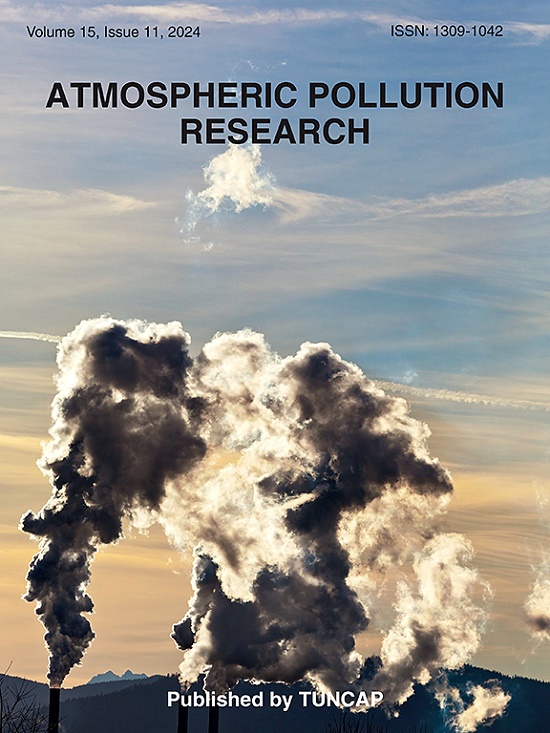Urban cyclists’ exposure to PM2.5: A quantitative analysis using trajectory data and mobile monitoring
IF 3.5
3区 环境科学与生态学
Q2 ENVIRONMENTAL SCIENCES
引用次数: 0
Abstract
Cyclists are particularly vulnerable to exposure to air pollutants, such as PM2.5; however, few studies have systematically incorporated bicycle usage patterns into the assessment of cyclists' PM2.5 exposure. This study introduces a novel framework that integrates shared bicycle trajectory data with mobile monitoring to quantitatively assess cyclists' PM2.5 exposure. To evaluate the effectiveness of the proposed methodology, a pilot study was conducted in Shenzhen, China. The results show that 60.45 % of cycling distances are less than 2 km, demonstrating its effectiveness in addressing urban short-distance travel issues. Cycling activity peaks during the morning and evening rush hours, with major hotspots including the Shenzhen-Hong Kong border area, the southwest of Longhua District, the southern part of Baoan District, and the central part of Nanshan District. The PM2.5 monitoring results show that the majority of the monitored routes recorded average PM2.5 concentrations exceeding 15 μg/m3 during the monitored periods, which is the World Health Organization guideline. The average PM2.5 inhalation dose for cyclists on weekdays is 7.49 μg/km, slightly higher than the 7.27 μg/km observed at weekends. Our results indicate that cyclists face increased health risks, such as respiratory diseases, due to prolonged exposure to elevated PM2.5 levels. These findings can help city managers develop policies to improve the cycling environment for riders and promote low-carbon transportation.
城市骑自行车者PM2.5暴露:基于轨迹数据和移动监测的定量分析
骑自行车的人特别容易暴露在PM2.5等空气污染物中;然而,很少有研究系统地将自行车使用模式纳入骑车者PM2.5暴露的评估中。本研究引入了一个新的框架,将共享自行车轨迹数据与移动监测相结合,定量评估骑车者的PM2.5暴露。为了评估所提出方法的有效性,在中国深圳进行了一项试点研究。结果表明,60.45%的骑行距离小于2公里,证明了其在解决城市短途出行问题方面的有效性。自行车活动在早高峰和晚高峰时段达到高峰,主要热点包括深港边境地区、龙华区西南部、宝安区南部和南山区中部。PM2.5监测结果显示,大部分监测线路在监测期间的PM2.5平均浓度均超过15 μg/m3,达到世界卫生组织的标准。平日骑行者PM2.5的平均吸入量为7.49 μg/km,略高于周末的7.27 μg/km。我们的研究结果表明,由于长时间暴露在PM2.5浓度升高的环境中,骑自行车的人面临着更大的健康风险,比如呼吸系统疾病。这些发现可以帮助城市管理者制定政策,改善骑车者的骑行环境,促进低碳交通。
本文章由计算机程序翻译,如有差异,请以英文原文为准。
求助全文
约1分钟内获得全文
求助全文
来源期刊

Atmospheric Pollution Research
ENVIRONMENTAL SCIENCES-
CiteScore
8.30
自引率
6.70%
发文量
256
审稿时长
36 days
期刊介绍:
Atmospheric Pollution Research (APR) is an international journal designed for the publication of articles on air pollution. Papers should present novel experimental results, theory and modeling of air pollution on local, regional, or global scales. Areas covered are research on inorganic, organic, and persistent organic air pollutants, air quality monitoring, air quality management, atmospheric dispersion and transport, air-surface (soil, water, and vegetation) exchange of pollutants, dry and wet deposition, indoor air quality, exposure assessment, health effects, satellite measurements, natural emissions, atmospheric chemistry, greenhouse gases, and effects on climate change.
 求助内容:
求助内容: 应助结果提醒方式:
应助结果提醒方式:


